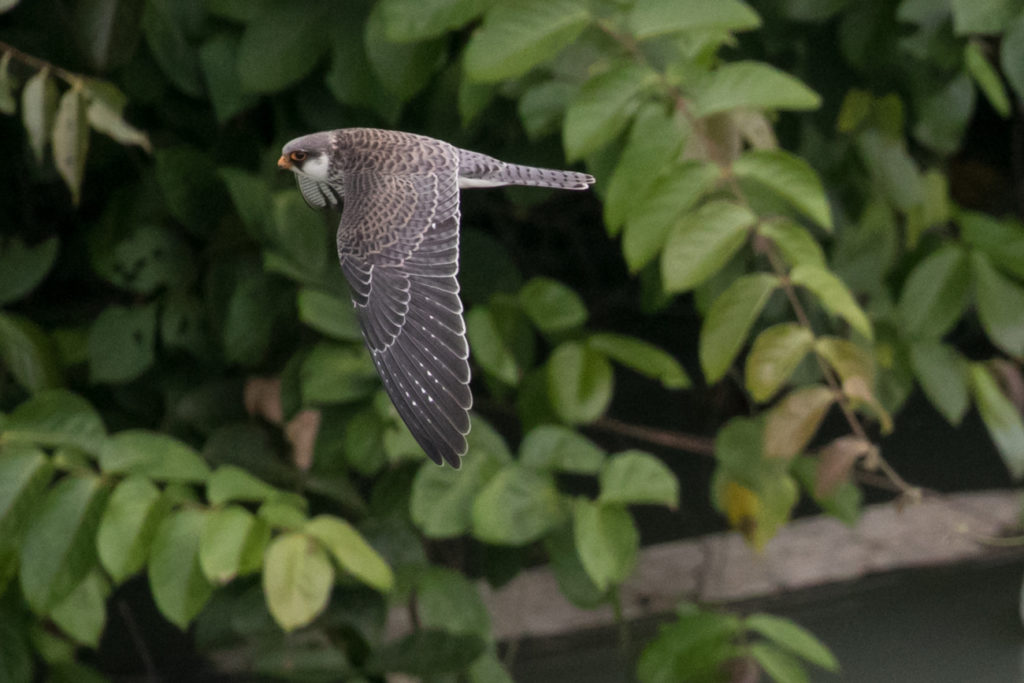The story of the incredible Amur Falcon migration stopover in Nagaland, India, broke to international news in 2012. It was a jaw-dropping tale, with reports of over 100,000 birds seen at a time at the newly created Doyang Reservoir. Also jarringly, it was reported that each day over 10,000 of these birds were being hunted and sold for food by small villages in the area. The astonishing emerging story interwove an ancestral montane hunting people and their mix of cultures, the auspicious arrival of the falcons, and a nascent conservation effort in a region that was only opened to global tourism in 2011.
Like many people, when I first read about the Amur Falcons in Nagaland, I felt incredulous. It was hard to believe that such a spectacle existed outside of common knowledge. I was then astounded when, in 2017, I was invited to be part of a ZEISS and Wildside Nature Tours sponsored expedition to journey there and observe that spectacle first hand. It was a once in a lifetime experience, one that turned into a twice in a lifetime experience when I returned again in 2018.

Amur Falcon 
Amur juvenile 
Catherine’s Sketchbook
Both journeys were quite long, for me begun in Los Angeles, CA and ending in the village of Pangti, Nagaland, perched atop the Himalayan foothills above the Doyang Dam and Reservoir. Hard effort can be met with great rewards, however. On both visits, I hunkered down to learn as much as I possibly could not just about the falcons, but also the people and the village that was kind enough to host us (and the state and region as well; when we crossed into Nagaland, and then into the Wokha District, the border and district officials were so astonished to see us that they exclaimed they’d never seen anyone like us before. Birders can appear odd even in expected circumstances, to be fair). We had big questions: were the birds actually congregating? Why were they congregating? What were they eating? How on earth did a whole culture of people turn directly from hunting to conservation efforts?
Once we were in Pangti, there were an awful lot of nifty endemic bird species to be sought out as well. The swath of the mountainous region that sweeps along the border of Nagaland and Myanmar has an intriguing limited crescent drawn on field guide range maps that can only mean one thing to serious birders: there are birds found there that occur nowhere else in the world.
But back to the falcons, and their story, intertwined and at times at odds with that of the Naga people. As with many narratives of a remote culture and its layers of history, the situation was, well, complicated. Actually complex is a better word, since the complexity was not only interesting, it also opened my eyes to how one might, in fact, grasp how a conservation movement might begin, and also understand how deeply a people can care for their land and its history and its inhabitants. The falcons themselves undertake one of the longest annual migration routes in the world, and do not particularly trouble themselves with borders, though they do have a vested interest in refueling. For their haul down from Northeast Asia, through the Himalayan foothills and valleys, across the Indian subcontinent, then astonishingly across the Indian Ocean, and then finally down a substantial portion of the African continent, they need places to rest and to eat. That they began to do so in such large numbers in this far off corner of the world engendered one of the best conservation turn arounds once could imagine.
The Amur Falcon migration is incredible, and their journeys take them through wide varieties of habitats and peoples, but the story of this small remote village and the Amur Falcon’s stopover there reverberates throughout the world.